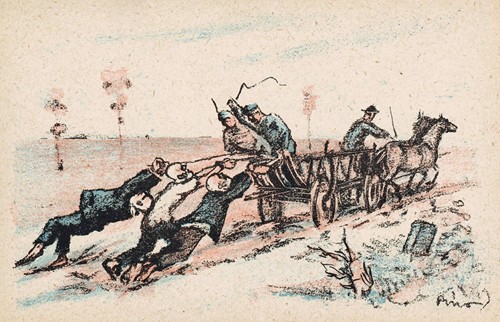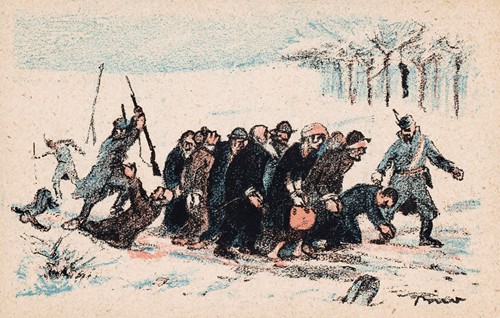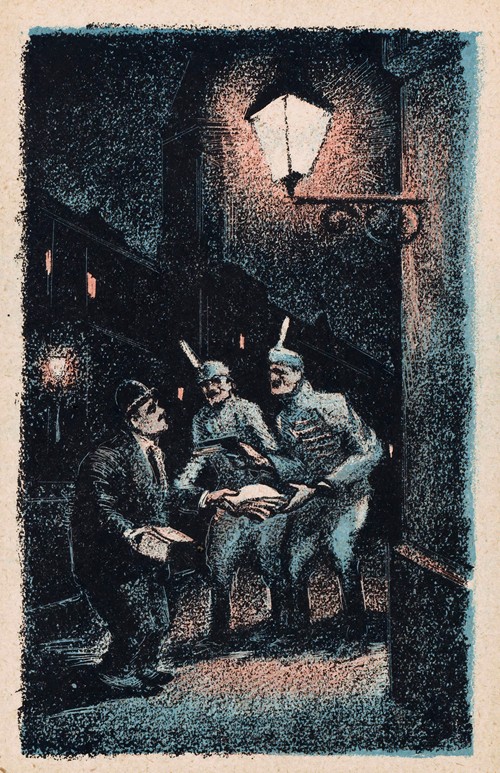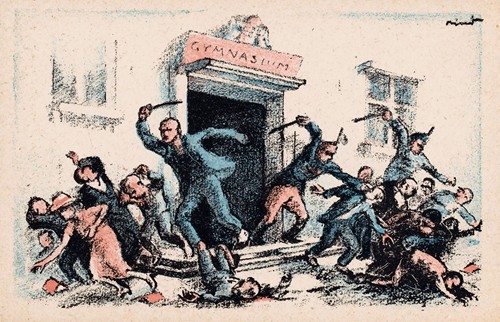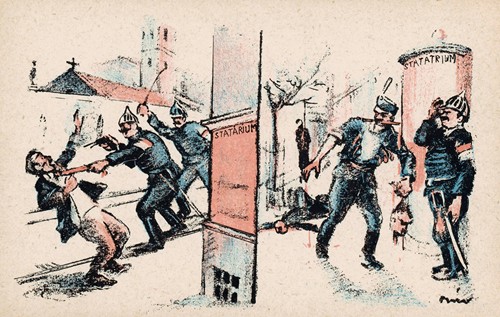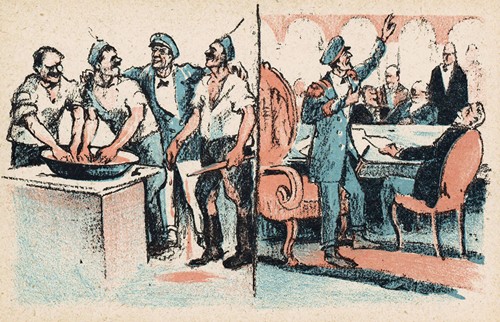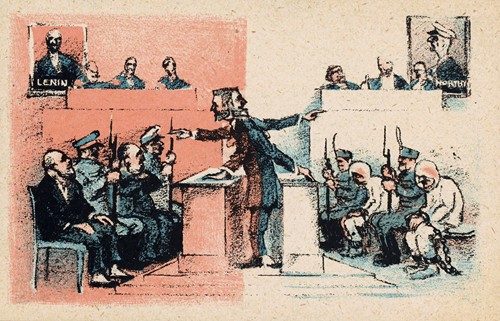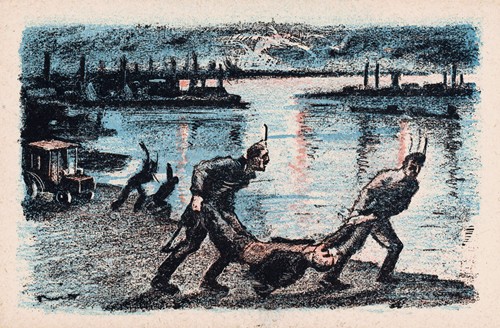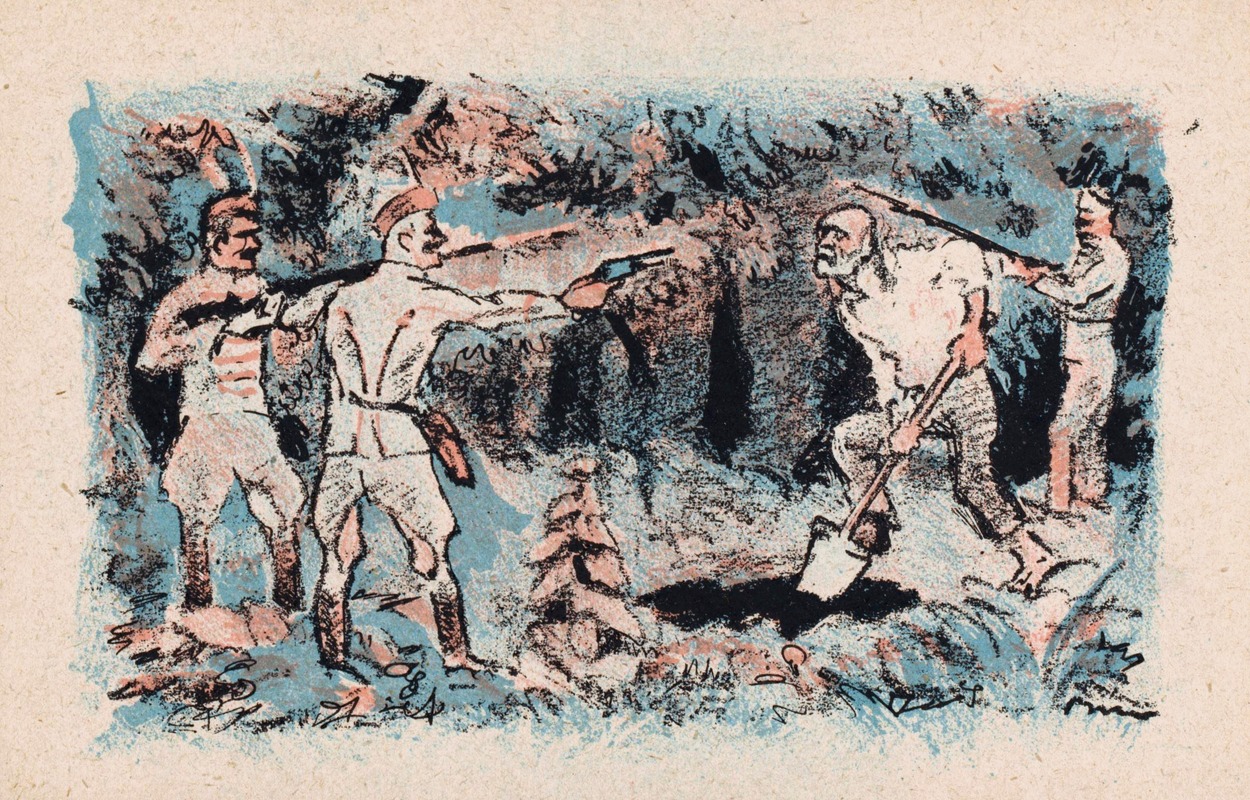

Mihály Biró was a Hungarian graphic artist, draftsman and caricaturist.
Mihály Weinberger was a son of Dávid Weinberger and Róza Neu, the family Magyarized their name to Biró. He attended the Royal Hungarian School of Applied Arts in Budapest. Between 1908 and 1910 Biró traveled to Munich, Berlin and England, where he attended a training workshop for the Arts and Crafts Movement in Chipping Campden and received a prize in a poster competition for The Studio magazine. Biró worked in Budapest as a poster artist for both the private sector and the Hungarian social democracy. In 1912 the first exhibition of his works took place in the Budapest Künstlerhaus.
Biró was a soldier in World War I and was dismissed from service in 1917 with the rank of lieutenant. During the war he designed various war posters for the home front and in January 1917 the cover of the German magazine Das Plakat . In 1917 he had an exhibition in the Ernst Museum . In the short-lived Hungarian Soviet Republic in 1919, Biró became the "Government Commissioner for Illustrated Political Posters" and fled to Vienna after it was suppressed.
In Vienna he worked as a poster artist and illustrator for newspapers and magazines such as the Arbeiter-Zeitung, the Neue Freie Presse, Die Stunden and the Die Bühne. For the National Council election in 1920 he designed six posters for the Social Democratic Workers' Party (SDAP). In 1925 he married Janka Teréziá Zechmann.
In 1928 Biró went to Berlin. After 1930 his order book worsened, and in view of the rise of National Socialism in Germany, he returned to Vienna in 1932. During the February fighting in 1934, Biró was in the Reumannhof . He fled to Bratislava , in a catastrophic financial situation and with increasingly poor health, he tried in vain to obtain an entry permit to Horthy-Hungary . In Czechoslovakia he painted portraits and a fresco on the workers' home in Nyitra .
After the Sudeten crisis in 1938 he fled to Paris, during the German occupation of France in World War II, he survived the German persecution of Jews in France as a prisoner in the Paris Rothschild hospital .
In 1947 he was able to return to Hungary, where he was unable to take up a position as a university lecturer at the Hungarian Academy of Fine Arts because of his poor health.

